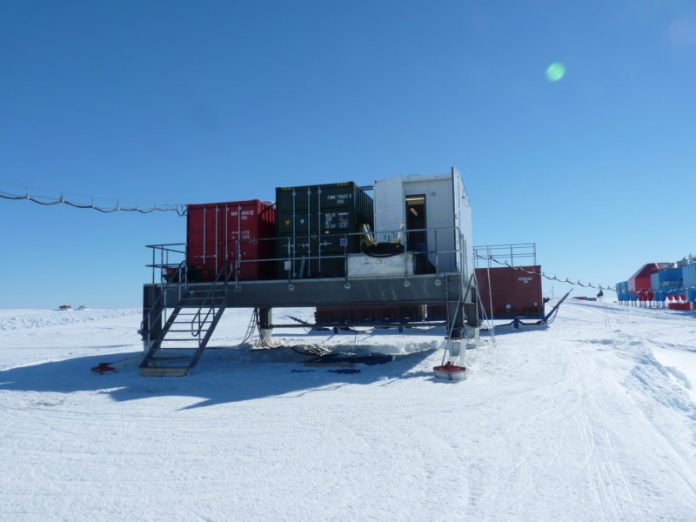This World Ozone Day, British Antarctic Survey (BAS) celebrates new technology which enables continuous monitoring of the ozone hole over Antarctica. Readings from the Dobson Ozone Spectrophotometer at Halley Research Station in Antarctica helped BAS scientists to discover the ozone hole in the 1980s. Now automated technology helps BAS to monitor the ozone hole remotely.
Cracks in the Brunt Ice Shelf, on which Halley Research Station sits, led to the Station being closed for safety reasons during the 2017 Antarctic winter. In response, the Halley Automation Project was initiated in 2017 to enable continued data collection while the station is unoccupied in winter.
Ground-breaking technology developed by BAS engineers for the Halley Automation Project has enabled continual automated measurements from Halley Research station to be collected and analysed remotely. Halley Research Station, currently unoccupied during the 2020 austral winter, continues to monitor the ozone hole with the automated Dobson.
Halley Automation Project Manager, Thomas ‘Barney’ Barningham says,
“This is now our second year of being able to capture the spring-time development of the ozone hole above Halley Research Station using our automated systems. Not only is this significant for maintaining these globally important long-term datasets, the core aim of our project, but it also signifies a reliability in our systems, thereby giving us further confidence in our approach to automating the research station. Importantly, these technologies could mark a paradigm shift in the way we gather scientific data across Antarctica.”
Jonathan Shanklin, now an emeritus fellow at BAS, says
“The automated Dobson also allows for much finer study of the ozone layer – no human could make so many measurements during the day, particularly as Halley will soon be entering its summer period of 24 hour daylight.”















